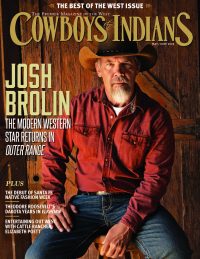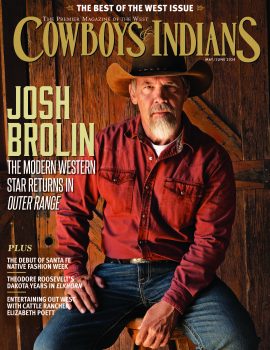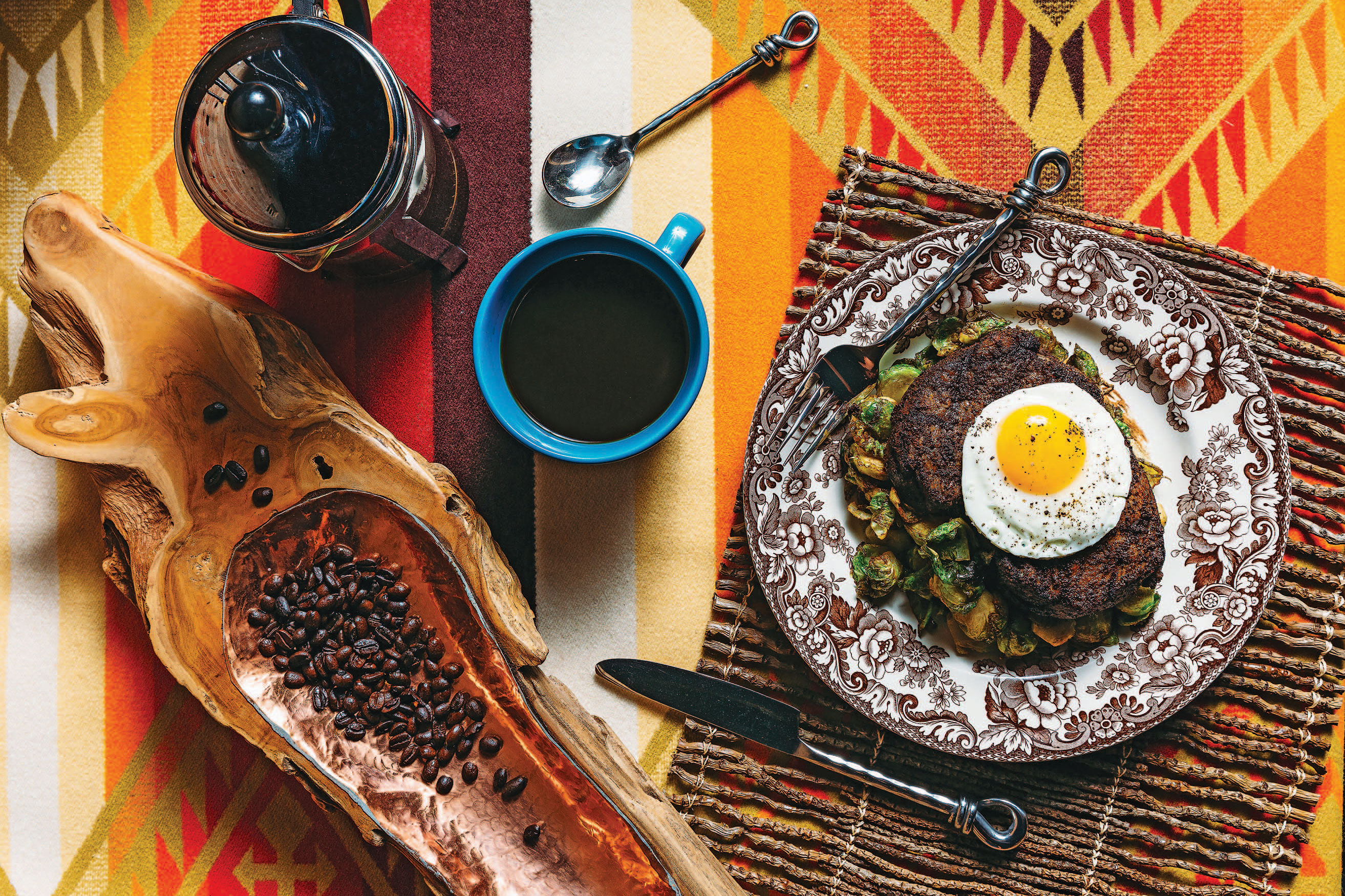
Ben Haile is brewing a handcrafted, organic coffee concern on the Shinnecock Reservation.
Ben Haile has seven coffee machines at home — including two Keurigs, a Cuisinart combination auto grind/brewer, a Black+Decker 12-cup, a Saeco Incanto semiautomatic espresso machine, and a manual espresso machine — but his favorite, everyday go-to joe is made with a four-cup Mr. Coffee machine, the kind you can find at Target for $19.99.
Part of Haile’s job as the owner of and coffee roaster at Thunder Island Coffee Roasters is to taste what he makes, and to make sure his coffee tastes just as good in an inexpensive drip-style machine as in a sleek, pricey Italian model. “There are slight differences in taste when using various machines, though I generally just alternate with different types of coffee drinks — espresso shots, cappuccinos, and small coffees made with single-serve K-cups, the four-cup Mr. Coffee, or, when I have company, the 12-cup brew,” he says, while drinking a cup of Canarsie roast (half-and-half, no sugar) today.
Thunder Island Coffee Roasters is one of the largest Native American-owned coffee roasting operations in the United States. Located on the Shinnecock Indian Reservation in Southampton, New York, and employing other tribal members, Thunder Island is primarily a wholesale business (Whole Foods Market stores on the East Coast stock its coffee), but it also has a retail store online.
Haile got into the coffee roasting business 20 years ago. His sister owned Thunder Island Coffee Shoppe, one of the cigarettes-and-coffee shops along Montauk Highway, and Haile figured coffee roasted on-site might be a good fit. “We set up a roaster in the back of the shop; it was literally a house on the edge of the reservation,” he says. “This highway is the one road to the east end of Long Island. It was a golden opportunity. So many people stopped in and got their cigarettes and coffee.”
While he was in the back of his sister’s store, he experimented with coffee beans from all over the world, and different roasts, too. He didn’t want an oily, glossy bean, which can produce strong yet bitter coffee. He was aiming for something else, something he’d not tasted before.
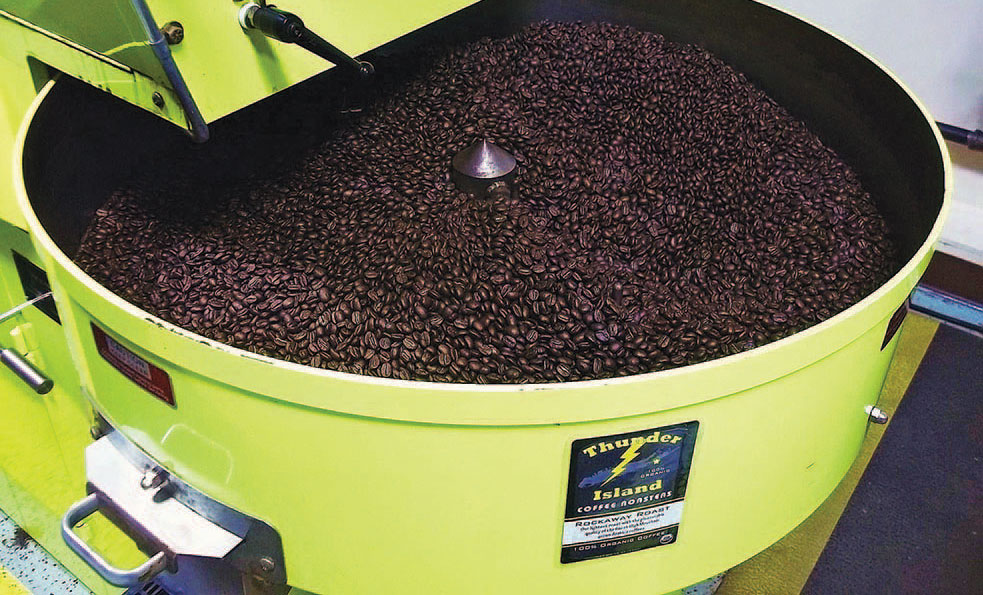
Five years and thousands of pounds of beans later, he found two different beans he was happy with — one from Peru and the other from Guatemala, both particular types of arabica that are grown at 4,000 feet or above. “The higher the elevation, the better the quality of green beans,” Haile says. “Some places might have volcanic soil, but elevation is the key to flavor.”
Structurally speaking, the beans are tiny, yet powerful. “It’s a hard bean or semihard bean. The beans are more consolidated, smaller and tighter in structure. They hold the flavor longer and give a better result for roasting.”
Thunder Island’s bags of roasted beans are single-source, but vary depending on the time of year. Because the Peruvian and the Guatemalan beans aren’t harvested at the same time, when the season’s over for one, the other is available. Both have similar flavor profiles.
Organic and fair trade, Haile’s beans are part of what he calls a “native-to-native exchange.” “The farmers we buy from are organic, smaller, family-owned farms,” he says. “They work in these fields and don’t want pesticides on their body or their family. We want to support these organic family farms.”
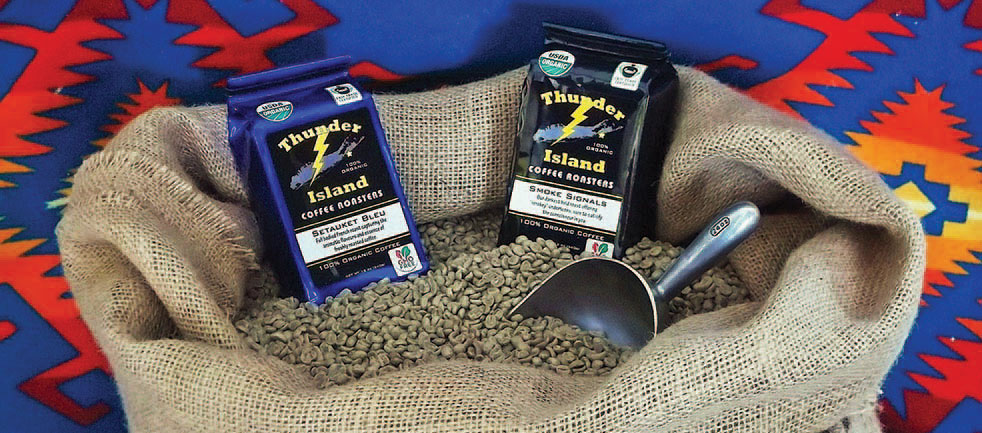
When he puts his beans in his IR-12 Diedrich roaster at anywhere between 350 and 450 degrees (it varies depending on the weather), the process is fairly quick. “There are two big stages of roasting,” he says. “The first eight minutes, there’s an endothermic stage (the “first crack”) whereby the heat goes into the beans and there’s a light crackling noise — this is the cinnamon stage, where the beans are a light golden-brown color. At 16 minutes into the roasting, the heat comes out of the beans. That’s the exothermic stage (the “second crack”) and there’s a loud crackling noise — that’s the French roast.”
After the beans pass the eight-minute mark, Haile checks on them every minute or so to make sure they’re roasting as they should. “I pull them out, smoke comes up, and I watch the color of the beans. Things are going fast, so if I’m three minutes off, that’s a big difference — or a big problem. A medium roast is right about 15 minutes, right before the French roast stage. It’s a darker brown, a dark tan.”
Just as important as the process is the company’s representation. Thunder Island offers six roasts, from the light Rockaway Roast to Setauket Bleu, a full-bodied French blend to kick-start the day. With the exception of the bestselling Smoke Signals blends, known for its smoky notes, the blends are all named for American Indian tribes in the region, and they’re all variations of the flavor profile Haile worked on for years while he was experimenting in the back of the cigarettes-and-coffee shop. “I developed this unique way to make coffee smooth and strong, but not bitter, with a clean finish. There’s almost a sweetness. They really are unique.”
Recipe
HG Sply Co. Coffee Rub
There’s almost no better breakfast than steak and eggs paired with a great cup of coffee. At HG, we’ve taken this breakfast staple and dressed it for dinner by crusting our all-natural rib-eye in a coffee rub. The components of the coffee rub give the steak an earthy and aromatic flavor that develops a nice crispy crust when grilled over a high heat. With a beautiful local Texas egg, simply prepared Brussels sprouts, and shallot-herb compound butter, it takes the familiar and inviting flavors from one of my favorite breakfast dishes and transforms it into a feast fit to pair with a glass of wine rather than a cup of joe.
— Danyele McPherson, executive chef of HG Sply Co., Dallas
(Yields about 2 cups)
1 cup ground coffee
¼ cup ground mustard
2 tablespoons black pepper
1 tablespoons garlic powder
¼ cup Spanish paprika
2 tablespoons onion powder
Salt, to taste
Combine ingredients and pour mixture onto a plate or pan. Season steak with salt to taste, and then press all sides of the steak into the rub mixture. Grill over high heat to desired temperature.
Thunder Island Coffee Roasters beans are available for purchase online at thunderislandcoffee.com. Opening photography items provided by Antèks Home Furnishing, antekshome.com.
From the January 2018 issue.



